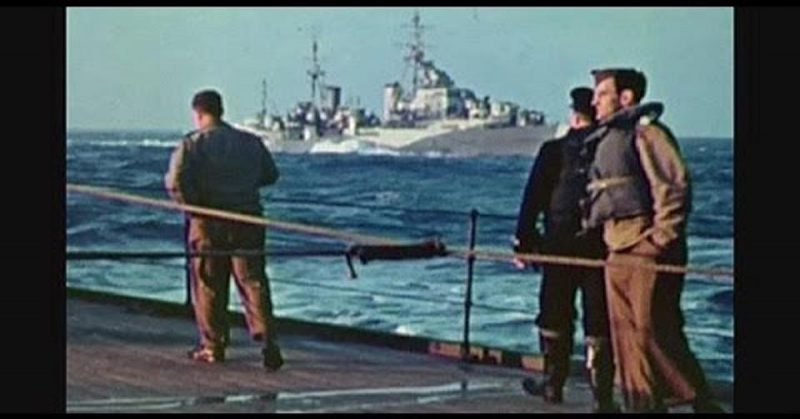The first shot of the Normandy Landings on June 6, 1944, came not from a gun, but from a camera. One George Stevens, a Hollywood film director, was on board the HMS Belfast, which first fired on the German defenses. By that time, however, Stevens had already commenced filming the momentous attack that changed the course of the war.
George Stevens was filming in color – a rarity at the time.
After a career in which he directed Fred Astaire and Ginger Rogers (Swing Time) and Cary Grant (Gunga Din), he enlisted in 1942. He saw Leni Riefenstahl’s pro-Nazi propaganda and resolved to produce work for the war effort. General Dwight Eisenhower gave him the task of producing combat footage. He headed a unit that filmed in 35 millimeters for military records and for documenting news.
He documented the Allied invasion of France and Germany in 16 millimeters, and on Kodachrome color film. Canisters of the film were sent to the US for development but were never distributed. Stevens stored them for decades.
Stevens died in 1975. His son, George Stevens Jnr, also a filmmaker, made a documentary of his father’s life using the best of his color footage. The documentary was called ‘George Stevens: D-Day to Berlin’. The cinematic journal documents D-Day, the liberation of Paris and other French towns and cities, De Gaulle, Patton, Montgomery, German prisoners of war and the chilling Dachau concentration camp. It contains interviews of men in the film unit.
The film is narrated by Stevens Jnr. He recalled his emotions when viewing the D-Day footage for the first time:
‘This film came on and it was sort of grey-blue skies and barrage balloons, those big things that hung in the sky, and it was on a ship. It turned out (to be) the HMS Belfast, and it was suddenly I realized the morning of the 6th of June, the beginning of the greatest seaborne invasion in history.’
‘I had this feeling that my eyes were the first eyes that hadn’t been there who were seeing this day in colour, and I watched this film unfold and on this ship – and all of these men with their flak jackets and anticipation of this day – and around a corner on the ship comes this man – helmet and jacket – and walks into a close-up, and it’s my 37-year-old father. It was so moving.’, The Telegraph reported.
For Stevens Jnr, the color film taken by his father is a significant cinematic record of the Second World War. ‘We thought at the time that this was the only color film of the war in Europe’, he said. ‘As it turned out, there was some German film that had not yet been discovered. But it is the greatest body of the color film, and World War II was a black-and-white war. That’s how we see it. That’s how we saw it. And suddenly to see it in color, it just took on a whole other dimension.’
https://www.youtube.com/watch?v=W0puab0ksis
